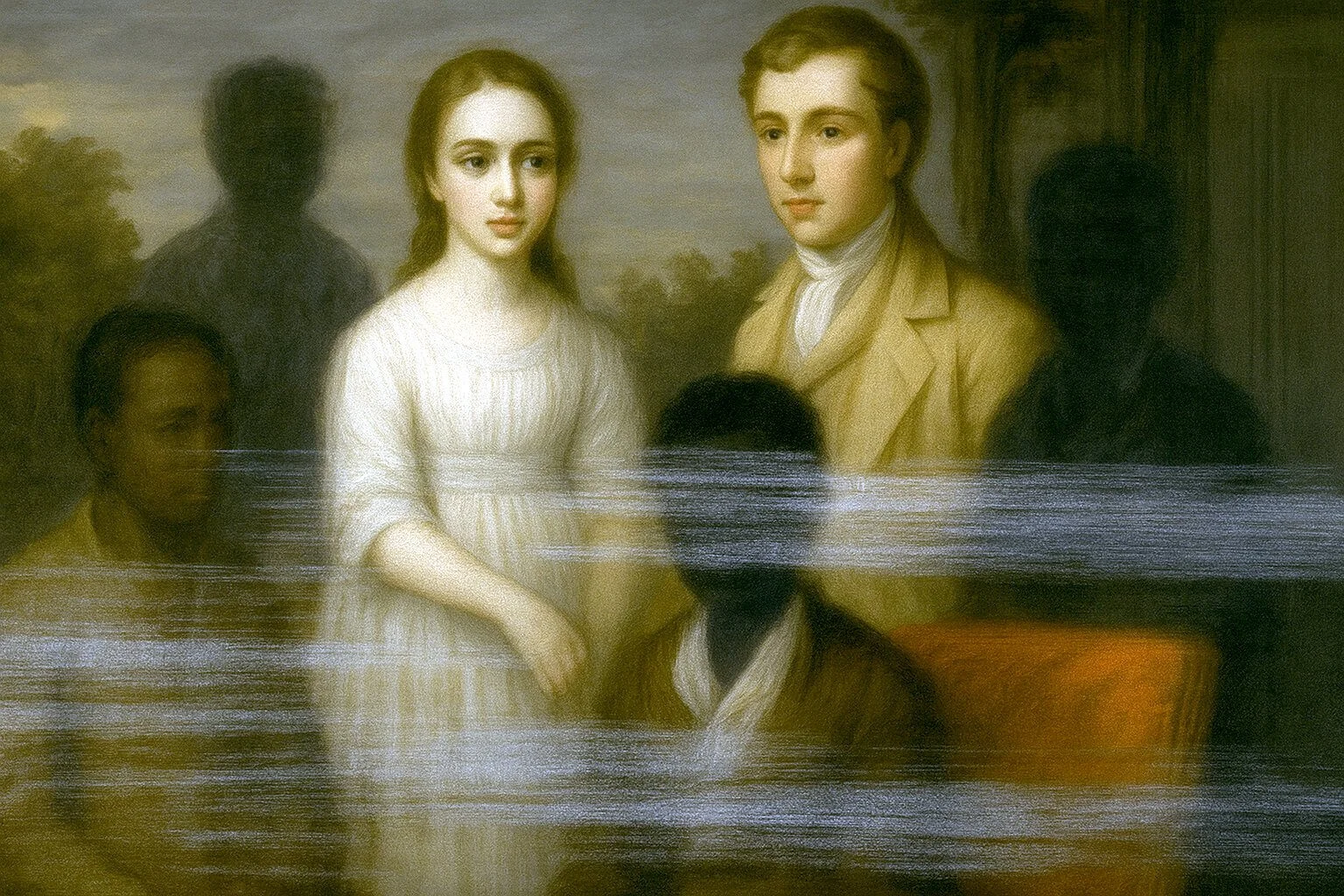Restoration, Part II: Why Are Precious Works of Art Restored?
“You don’t need fire or water to erase someone from history.
A brush, and silence will do.”
In 1837, Jacques Guillaume Lucien Amans — a French-born portraitist working in New Orleans — was commissioned by the Frey family to paint a likeness of their three children: Elizabeth, Léontine, and Frederick. The Freys were part of the city’s white Creole elite, a social class that thrived in the wealth and brutality of antebellum Louisiana. At the time, it was not uncommon for prosperous families to commission formal portraits, particularly of their children, as both personal keepsakes and public declarations of status.
What was uncommon — extraordinary, even — was that this portrait also included a fourth child: a young Black boy named Bélizaire. He was enslaved by the family, likely as a house servant or playmate to the children. And yet, he was not tucked into the background or reduced to symbolic servitude. He was painted with presence — standing alongside the white children, rendered with the same attention and realism. He looks away from the viewer.
Jacques Guillaume Lucien Amans, Bélizaire and the Frey Children, c. 1837. Oil on canvas.
To include an enslaved child in such a portrait was not unheard of, but it was rare — and always complicated. In many such paintings, Black figures were relegated to visual shorthand: turbans, trays, or turned backs. But Bélizaire’s posture, proximity, and scale imply that his role in the household was personal, not merely functional. That the Freys chose to have him included says something — not necessarily about progressive values, but about his undeniable place in their daily lives. He was, in a very real way, part of the family’s world — though not by choice, and not with freedom.
And yet, at some point after the portrait was completed, someone decided he should no longer be part of that world so Bélizaire was painted out — erased. For 120 years, the painting hung as a genteel family scene no longer mentioning the fourth figure. No one remembered his name.
We begin to understand why precious works of art are restored.
In 2021, the Rijksmuseum's study of Dutch Golden Age portraits found Black figures weren’t simply omitted. They were moved, muted, painted over — sometimes literally scraped from the canvas. What began in the sketch disappeared by the final layer. Like Bélizaire, their full stories were literally covered up.
AI-generated image illustrating historical erasure in 19th-century portraiture.
For generations, museums curated a version of history shaped by privilege — and protected by exclusion. Often what we see today reflects only what has been deemed worthy of permanence. In this context, Bélizaire’s erasure becomes more than a footnote.
Whoever painted Bélizaire out never imagined anyone would come looking for him. They never imagined how one small decision could easily become fact: that certain people were never there, that certain lives had no part in shaping the world we live in, that certain realities are not worth preserving. Every recovered figure is a verdict against historical amnesia.
This is Why Restoration Matters
For us, here at the Northeast Louisiana Delta African American Heritage Museum, preserving and sharing the culture of African-Americans is central to our mission. We see ourselves as protectors of history; the first line of defense against erasure. It is important work that begins with the question, 'Who's missing from the story — and how do we bring them back in?'
Next in Part III: Restoration doesn’t end with revelation — that’s where it begins.



